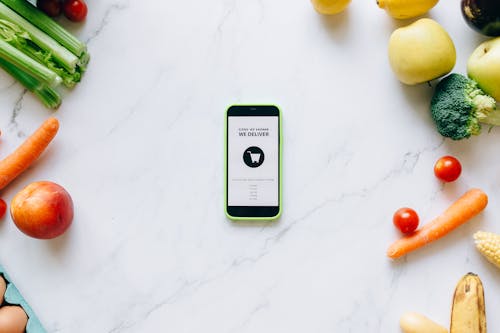What’s New In The World Of Food Technology?
Food technology is a fast-growing field that allows food manufacturers to create more appealing, high-quality products. Technological advances have brought us from using ancient methods such as fermenting and cooking in order to preserve foods to using modern equipment and processes to produce new and improved foods. Food tech is now used in everything from frozen yogurt shops to multi-national food conglomerates.
Food technology is a fast-growing field that allows food manufacturers to create more appealing, high-quality products. Technological advances have brought us from using ancient methods such as fermenting and cooking in order to preserve foods to using modern equipment and processes to produce new and improved foods. Fast food companies like McDonald’s, Burger King, Subway, KFC, Domino’s Pizza, Starbucks and many others have used these advancements of the food tech industry in their business plans over the years.
What Does Food Technology Mean?
Food technology is the application of science and technology to the production of food to increase the nutritional value and quality of the final product. Food technology is an application of food science and engineering, including microbiology, biochemistry, organic chemistry, and food processing. Food scientists and engineers use scientific principles and engineering approaches to improve the quality and safety of foods. Food technology is one of the branches of food science and technology. The term “food technology” is frequently used to refer to the application of engineering principles and the use of manufacturing techniques to the production of food. This is in contrast to food science, which is the application of basic sciences to the study of food.
How Food Technology Works?
Food technology is the application of science and engineering to the food industry. Engineering plays a big part in the food industry, not only because it produces safe and effective food products, but also because it controls the process. The process helps ensure consistency and quality of the end product, which is especially important in the food industry. Engineers can help produce safe and consistent food products by designing equipment and processes to control quality, consistency and safety. For example, engineers can design equipment to control the temperature and humidity in the food production room to ensure that the food is safe to eat.
Types of Food Tech
There are many different types of food tech. Some of the most common types of food tech are ingredient technology, formulation technology and food production technology. Ingredients are the foods that go into a product. In ingredient technology, engineers design equipment to control the production and processing of ingredients like corn, wheat, or potatoes.
Formulation technology is a branch of food technology that deals with the formulation of foods. It includes things like stabilizing ingredients and processing foods like bread or yogurt. Food formulation is important because it ensures that the foods are safe and palatable. Finally, food production technology is important because it focuses on the actual production of food. Food production technology includes things like growing crops, harvesting, processing and packaging foods.
RGB Color Changes in Food Technology
Food technology has been around for a long time, but now it can process foods like yogurt and bread using the RGB color palette. This means the ingredients are no longer just yellow or white, but they can be any color. This brings a whole new level of variety to the food industry and allows companies to create more appealing, high-quality products. While the RGB color palette is most commonly associated with yogurt, bread and other similar products, it can be used in almost any food product or process. For example, a company might decide to make some kind of snack with the RGB color palette. The ingredients would be yellow corn, blue corn and red tomatoes, for example.
RFID Tracking in food technology
RFID stands for radio frequency identification. RFID tags are small devices that are placed inside food items like produce or meat. An RFID reader is then placed somewhere near the store where the food is being sold. The RFID reader reads the RFID tag and sends that information to a computer where it is stored for later use. For example, let’s say you are a grocery store and you want to track the produce that you sell.
You put an RFID tag in the produce and then you put an RFID reader at the store where the produce is being sold. Every time someone buys the produce, the RFID tag on the produce sends your computer an inventory number. This information can be used to tell you how many times a certain piece of produce was sold and where it came from. With this information, you could track down where your suppliers are and see if there are any problems with the quality of their produce. This can also be used for fraud prevention, for example if someone tries to steal the produce. If the tags are read and the produce is traced back to the store, then it is a red flag for fraud.
Read More: How Education Technology Is Changing the World?
3D Printing in food technology
Now that food tech has the RGB color palette, and RFID tags and readers, it’s time to introduce 3D printing. 3D printing is an interesting technological advancement that allows engineers to create food products in a 3D printer. For example, let’s say you work at a fast food restaurant and you want to make some kind of snack. You can design the snack and then send it to the engineering department to be made in the 3D printer. Engineering would print out the snack and then combine it with the ingredients like corn, tomatoes and blue corn that have RFID tags. When the snack is served, the RFID tags on the ingredients would tell the computer what ingredients went into the snacks and therefore give the customers detailed information about each snack.
Nutrition and Health Benefits of Food Technology
Food technology has provided us with many nutritional benefits. For example, food technology now allows us to make high-quality protein-rich meat that is much leaner than meat from decades ago. With more protein in our diets, people are healthier and have less risk of developing heart disease and other illnesses. Healthy and nutritious food is especially important for people with certain conditions like diabetes or HIV/AIDS. These people may require special dietary restrictions in order to stay healthy.
Future Prospects for Food Technology
Food technology is a fast-growing field that allows food manufacturers to create more appealing, high-quality products. Technological advances have brought us from using ancient methods such as fermenting and cooking in order to preserve foods to using modern equipment and processes to produce new and improved foods. Food tech is now used in everything from frozen yogurt shops to multi-national food conglomerates. In the future, it may make it possible to produce more nutritional food from less natural ingredients.
Conclusion
Food technology is a fast-growing field that allows food manufacturers to create more appealing, high-quality products. Technological advances have brought us from using ancient methods such as fermenting and cooking in order to preserve foods to using modern equipment and processes to produce new and improved foods. Food tech is now used in everything from frozen yogurt shops to multi-national food conglomerates. In the future, technology may make it possible to produce more nutritious foods from less natural ingredients.



